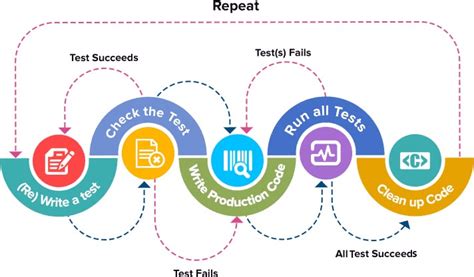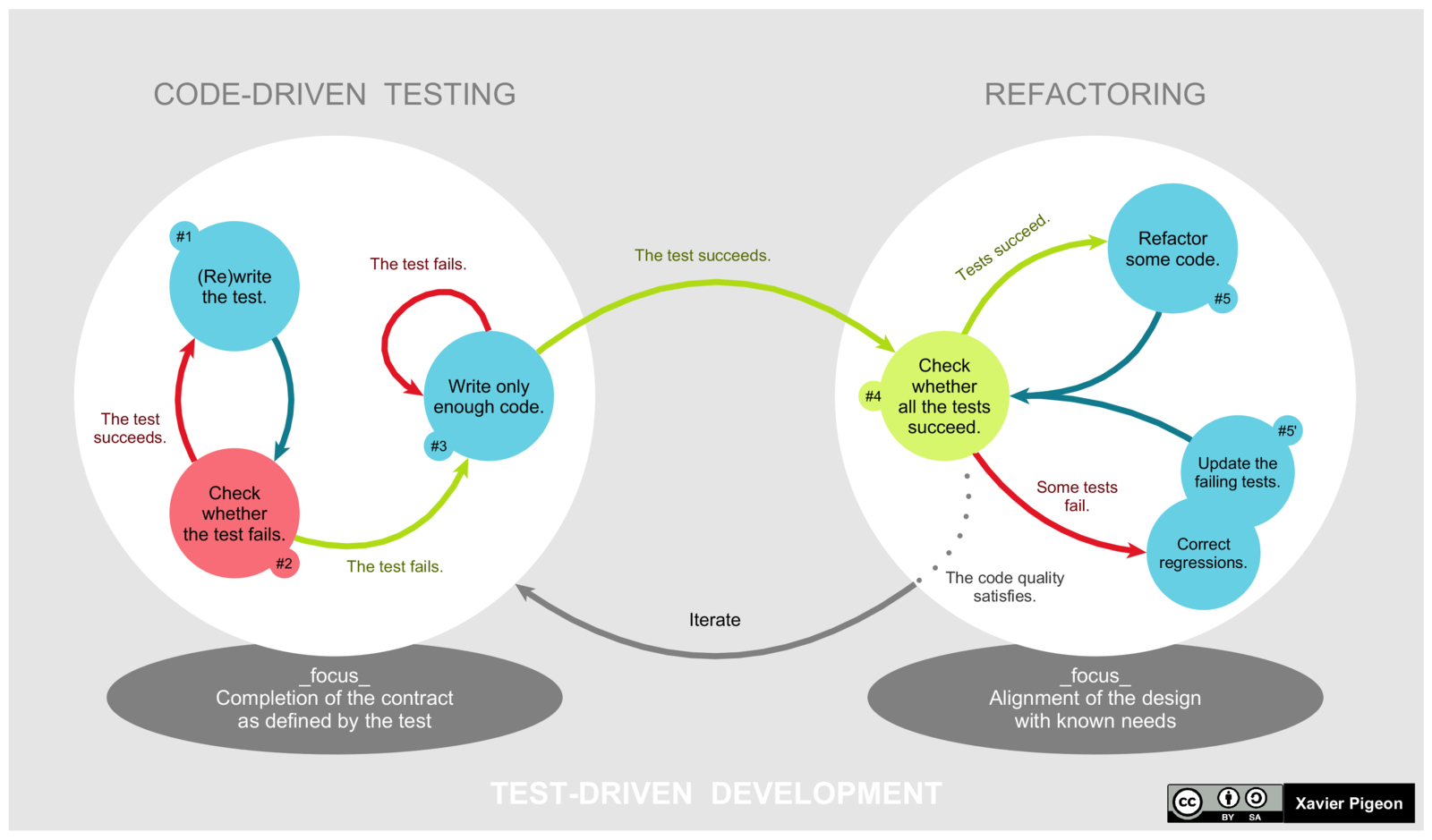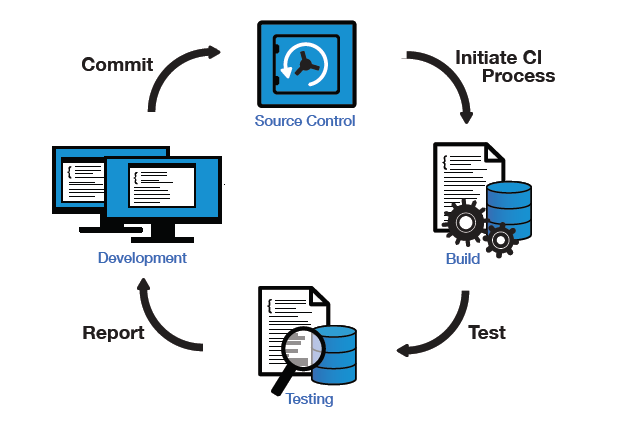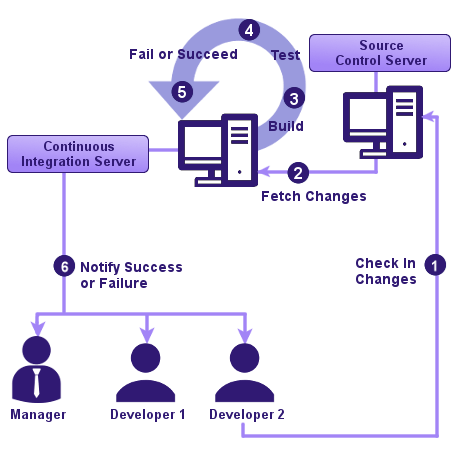
https://www.reddit.com/r/ProgrammerHumor/comments/a2c4gg/quality_assurance/
If you like to break things (mostly software), then QA or software testing may be a good job for you.
The top r/ProgrammerHumor post of all time… QA stands for Quality
Assurance.

https://www.reddit.com/r/ProgrammerHumor/comments/a2c4gg/quality_assurance/
If you like to break things (mostly software), then QA or software
testing may be a good job for you.
document.querySelector('video').playbackRate = 1.2https://en.wikipedia.org/wiki/Test-driven_development

Note: the Test fails/succeeds logic above might seem
backwards, but it’s not!
Note:
* Some people complain TDD is not realistic.
* Doing it for open-ended code that does not exist yet is not!
* Realistic TDD starts with a base of functioning code, then you write
tests, and the TDD part picks up mostly for adding new features, not for
writing tests before any code exists at all…
* This is a very common situation!
1. Add a test
* In test-driven development, each new feature begins with writing a
test.
* Write a test that defines a function, or improvements of a function,
which should be very succinct.
* To write a test, the developer must clearly understand the feature’s
specification and requirements.
* The developer can accomplish this through use cases and user stories
to cover the requirements and exception conditions, and can write the
test in whatever testing framework is appropriate to the software
environment.
* It could be a modified version of an existing test.
* This is a differentiating feature of test-driven development, versus
writing unit tests after the code is written:
* it makes the developer focus on the requirements before writing the
code for the feature addition, a subtle but important difference.
2. Run all tests and see if the new test fails (it
should)
* This validates that the test harness is working correctly, shows that
the new test does not pass without requiring new code because the
required behavior already exists, and it rules out the possibility that
the new test is flawed and will always pass.
* The new test should fail for the expected reason (it’s not implemented
yet…).
* This step increases the developer’s confidence in the new test.
3. Write the code
* The next step is to write some code that causes the test to
pass.
* The new code written at this stage is not perfect and may, for
example, pass the test in an inelegant way.
* That is acceptable, because it will be improved and honed in Step
5.
* At this point, the only purpose of the written code is to pass the
test.
* The programmer must not write code that is beyond the functionality
that the test checks.
4. Run tests
* If all test cases now pass, the programmer can be confident that the
new code meets the test requirements, and does not break or degrade any
existing features.
* If they do not, the new code must be adjusted until they do.
5. Re-factor code
* The growing code base must be cleaned up regularly during test-driven
development.
* New code can be moved from where it was convenient for passing a test,
to where it more logically belongs.
* Duplication must be removed.
* Object, class, module, variable, and method names should clearly
represent their current purpose and use, as extra functionality is
added.
* As features are added, method bodies can get longer and other objects
larger.
* They benefit from being split and their parts carefully named to
improve readability and maintainability, which will be increasingly
valuable later in the software life cycle.
* Inheritance hierarchies may be rearranged to be more logical and
helpful, and perhaps to benefit from recognized design patterns.
* There are specific and general guidelines for re-factoring and for
creating clean code.
* By continually re-running the test cases throughout each re-factoring
phase, the developer can be confident that process is not altering any
existing functionality.
* The concept of removing duplication is an important aspect of any
software design.
* In this case, it also applies to the removal of any duplication
between the test code and the production code, for example magic numbers
or strings repeated in both to make the test pass in Step 3.
Repeat
* Starting with another new test, the cycle is then repeated to push
forward the functionality.
* The size of the steps should always be small, with as few as 1-10
edits between each test run.
* If new code does not rapidly satisfy a new test, or other tests fail
unexpectedly, the programmer should undo or revert in preference to
excessive debugging.
* Continuous integration helps by providing revertible
checkpoints.
* When using external libraries it is important not to make increments
that are so small as to be effectively merely testing the library
itself, unless there is some reason to believe that the library is buggy
or is not sufficiently feature-complete to serve all the needs of the
software under development.

https://en.wikipedia.org/wiki/Continuous_testing
https://en.wikipedia.org/wiki/Continuous_integration
https://en.wikipedia.org/wiki/Deployment_environment
When people are responsible for manually running tests, they get put-off and not run…
Continuous testing was originally proposed as a way of reducing waiting time for feedback to developers by introducing development environment-triggered tests as well as more traditional developer/tester-triggered tests.
Continuous testing is the process of executing automated tests as part of the software delivery pipeline to obtain immediate feedback on the business risks associated with a software release candidate.
For Continuous testing, the scope of testing extends from validating bottom-up requirements or user stories to assessing the system requirements associated with overarching business goals.


+++++++++++ Cahoot-19.1
https://mst.instructure.com/courses/58101/quizzes/57205
What must precede a statement to be executed in a doctest?
(forgot to show in lecture)
Notes:
To debug with pudb:
* https://documen.tician.de/pudb/starting.html
*
https://stackoverflow.com/questions/25182812/using-python-pudb-debugger-with-pytest
Put this at the top of your file:
import pudb; pu.db
And, run pytests or nose as:
pytest -s yourfile.py
+++++++++++ Cahoot-19.2
https://mst.instructure.com/courses/58101/quizzes/57206
What simple testing mechanism do pytest and nosetests employ?
(forgot to show in lecture)
Reading:
* https://docs.python.org/3/library/unittest.mock-examples.html
*
https://docs.python.org/3/library/unittest.mock.html?highlight=mock#module-unittest.mock
* https://realpython.com/python-mock-library/
* https://www.geeksforgeeks.org/python-testing-output-to-stdout/
Examples:
* 19-TestingFrameworks/testing_05_io.py
Notes:
* Rather than using mock, instead it is often better to handle
overwriting sys.sdin or sys.stdout directly, as we did before:
* 18-InputOutput.html
https://en.wikipedia.org/wiki/Mutation_testing
If you have working code, and supposedly working unit tests, and you
break your code using logic changes (not syntax errors), but your unit
tests do not break, then you unit tests were not good enough. Mutation
testing frameworks introduced constrained errors (types of logic errors,
flexibly) into code.